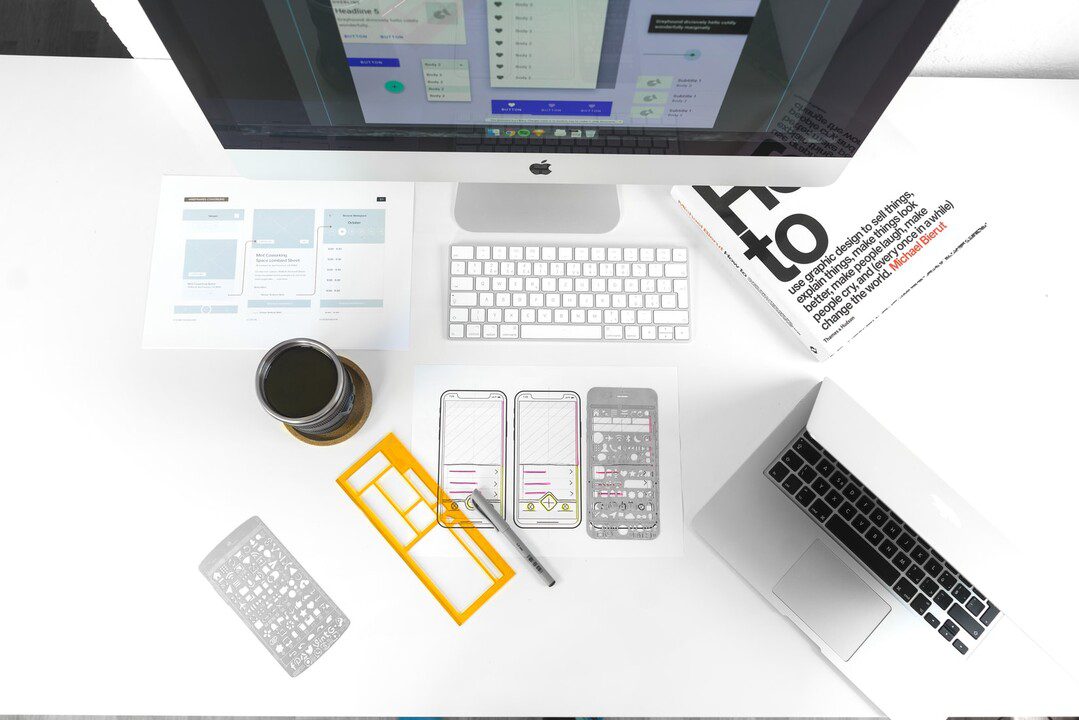The user experience is primarily shaped by the responsibilities that UX Architects and UX Designers play in the dynamic field of digital design. However, sometimes used synonymously, these roles differ in their duties, focus, and skill sets. This article aims to clarify the subtle differences between UX Architect vs UX Designer and examine each role’s unique contributions to user-centered design.
Who is a UX Architect?
A UX Architect is a strategic thinker and planner responsible for crafting the foundational structure of a digital product. Their role goes beyond the surface, focusing on the product’s information architecture, navigation, and overall flow.
Unlike UX Designers who concentrate on the visual aspects, UX Architects delve into the broader user experience, ensuring that the skeleton of the product is robust and user-friendly.
Defining Information Architecture: One of the core responsibilities of a UX Architect is to define the information architecture, establishing a logical and intuitive organization of content within the digital product.
Mapping User Flows: UX Architects design intricate user flows, mapping out the user’s steps to accomplish specific tasks within the product. This ensures a flawless and intuitive journey for the end user.
Wireframing and Prototyping: Creating wireframes and prototypes is a crucial aspect of the UX Architect’s toolkit. These low-fidelity representations allow testing and refining the product’s design before it enters the development phase.
Collaboration with Stakeholders: UX Architects collaborate closely with stakeholders, UX Designers, and developers to ensure a cohesive and effective user experience. Their role as a bridge between design and development is paramount for project success.
Usability Testing: Conducting usability testing is another critical responsibility, providing valuable insights into user behavior and preferences. This iterative process allows UX Architects to refine the design based on real-world user feedback.

The Difference Between UI and UX Architect
Before delving into the specific roles, clarifying the distinction between UX and UI design is crucial. While UX Architects focus on the overall structure and flow of the product, UI Architects concentrate on the visual elements, such as colors, fonts, buttons, and other interface components. Understanding this difference is fundamental to grasping the unique contributions of UX Architects.
The Essence of UX Design: User Experience (UX) design encompasses users’ holistic experience with a digital product. It involves usability, accessibility, and overall satisfaction, primarily focusing on meeting user needs and business goals.
The Visual Realm of UI Design: User Interface (UI) design, on the other hand, hones in on the visual aspects of the product. It deals with the presentation and interactivity of the interface, ensuring that it’s visually appealing, user-friendly, and aligns with the brand identity.
| Characters | UI Architect | UX Architect |
| Focus | Primarily focuses on the visual aspects of the product, i.e., layout, color schemes, and design elements. | Primarily focuses on the overall user experience and encompasses the entire user journey and interaction. |
| Accountability | Accountable for designing the actual interface that users interact with. | Accountable for creating a smooth and enjoyable overall user experience across all touchpoints. |
| Skill Set | Proficient in graphic design, typography, and visual design tools. | Proficient in user research, information architecture, usability testing, and interaction design. |
| Tools | Uses tools like Adobe XD, Sketch, Figma, and other design software | Uses tools such as Axure, InVision, Balsamiq, and Sketch, but also employs broader tools for user research. |
| Concerns | Concerned with the aesthetics and look-and-feel of the interface elements. | Concerned with understanding user needs, behaviors, and emotions to enhance the overall user satisfaction. |
| Deliverables | Delivers design mockups, prototypes, and style guides. | Delivers user personas, user journeys, wireframes, and usability reports. |
| User Interaction | Primarily concerned with the surface-level interaction and visual appeal. | Concerned with the entire user journey, including pre- and post-interaction phases. |
| Metrics | Metrics often include visual appeal, consistency, and adherence to design principles. | Metrics include usability, accessibility, user satisfaction, and the emotional impact on users. |
Roles And Responsibilities of a UX Architect
Information Architecture: UX Architects are the architects of information, structuring the content in a way that makes sense to users. It involves creating a blueprint that guides users through the product effortlessly.
User Flows: Designing user flows is a meticulous task that involves understanding the various paths users might take within the product. UX Architects chart these journeys, ensuring they are intuitive and goal-oriented.
Wireframing and Prototyping: The creation of wireframes and prototypes is where the conceptual ideas take shape. UX Architects use these low-fidelity representations to test and iterate on the product’s design before it progresses to development.
Collaboration: Collaboration is at the heart of a UX Architect’s role. They work closely with stakeholders, UX Designers, and developers, ensuring everyone is aligned on the vision and goals of the project.
Usability Testing: Usability testing is the feedback loop that refines the design. UX Architects conduct these tests to gather insights into how users interact with the product, leading to continuous improvement.
The Skills, Methods, and Tools of UX Architects
Skills: UX Architects need a diverse set of skills, including analytical thinking, problem-solving, and a deep understanding of user psychology. Strong communication skills are also crucial for effective collaboration.
Methods: Research methods such as user interviews, surveys, and usability testing are the foundation of a UX Architect’s work. These methods provide the insights needed to make informed design decisions.
Tools: Various tools aid UX Architects in their tasks. The correct set of tools is essential for efficiency, from wireframing tools like Axure and Sketch to analytics tools that provide data on user interactions.
Adaptability: The digital landscape is dynamic, and UX Architects must be adaptable. Staying updated on industry trends, emerging technologies, and design methodologies is crucial for maintaining relevance and effectiveness.
Who is a UX Designer?
In contrast to UX Architects, UX Designers are the visual storytellers of the digital realm. They focus on aesthetics and interactions, ensuring that the user interface is functional and visually engaging. While UX Architects shape the skeleton, UX Designers add the flesh, breathing life into the product.
Visual Design Expertise: The core responsibility of a UX Designer lies in creating visually appealing designs. It involves selecting color schemes, choosing typography, and curating imagery that aligns with the brand identity and resonates with the target audience.
Interaction Design Mastery: UX Designers excel in interaction design. They craft the interactive elements of the interface, such as buttons, forms, and animations, ensuring a seamless and engaging user experience.
Prototyping for Visualization: High-fidelity prototypes are the canvas where UX Designers bring their designs to life. These visual representations provide a tangible preview of the final look and feel of the product.
User Research from a Design Perspective: While UX Architects conduct broad user research, UX Designers focus on specific design-related research. It involves understanding user preferences and design trends and incorporating these insights into the visual narrative.
Roles and Responsibilities of a UX Designer
Visual Design: UX Designers are the custodians of visual aesthetics. They curate the color palette, typography, and imagery to create an interface that is functional and visually appealing.
Interaction Design: Crafting the interactive elements of the interface is a meticulous task. UX Designers ensure that buttons, forms, and other components work smoothly and contribute to a positive user experience.
Prototyping: High-fidelity prototypes serve as the canvas for UX Designers to showcase their designs. This visual representation allows for effective stakeholder communication and aids in the iterative design process.
User Research: While less extensive than the research conducted by UX Architects, UX Designers engage in user research from a design perspective. It involves understanding design preferences and current trends and incorporating these insights into the visual design.
Collaboration: Collaboration is a vital aspect of a UX Designer’s role. They work closely with UX Architects, developers, and other stakeholders to ensure that the visual design aligns smoothly with the overall user experience strategy.
The Skills, Methods, and Tools of UX Designers
Visual Design Skills: UX Designers need a strong foundation in visual design, including a keen eye for aesthetics, color theory, and an understanding of design principles.
Interaction Design Skills: Mastery of interaction design principles is essential. UX Designers need to create interfaces that look good and provide an intuitive and engaging user experience.
Prototyping Tools: Tools like Adobe XD, Sketch, or Figma are indispensable for UX Designers. These tools allow them to create high-fidelity prototypes, enabling effective communication and collaboration with other team members.
User-Centered Design Methods: UX Designers employ user-centered design methods, including creating user personas and journey maps and employing design thinking approaches to inform their design decisions.
Adaptability: Similar to UX Architects, UX Designers need to be adaptable. The digital design landscape evolves rapidly, and staying updated on design trends and emerging tools is crucial.
UX Architect vs UX Designer
Professionals who play key roles in developing a satisfying and productive user experience for goods, websites, or applications are user experience (UX) architects and UX designers. Their roles are different despite considerable overlap in their tasks. The following are the primary distinctions between UX designers and architects:
Scope of Work: The primary distinction between UX Architects vs UX Designers lies in the scope of work. While UX Architects focus on a product’s overall structure and organization, UX Designers concentrate on the visual and interactive elements.
Depth of Research: UX Architects conduct in-depth user research to inform information architecture, user flows, and overall structure. UX Designers, on the other hand, engage in research more specific to visual aesthetics and design preferences.
Collaboration Points: Collaboration is integral to both roles, but the points of collaboration differ. UX Architects collaborate more closely with developers and stakeholders on the foundational aspects of the product, whereas UX Designers collaborate extensively with UX Architects and focus on the visual design.
Prototyping Approaches: UX Architects primarily work with wireframes and low-fidelity prototypes, emphasizing the structure of the product. In contrast, UX Designers use high-fidelity prototypes to showcase the final look and feel of the interface.
In reality, depending on the size and structure of the team, individuals may wear numerous hats, and the roles of UX designers and architects can differ between firms. Nonetheless, these differentiations offer a broad structure for comprehending their primary duties and areas of emphasis.
Criteria |
UX Architects |
UX Designers |
| Focus | Primarily focuses on the overall structure and system architecture of the user experience. | Primarily focuses on the visual and interactive aspects of the user interface. |
| Responsibilities | Defines the overall user experience strategy, information architecture, and system functionality. | Designs the look and feel, including layout, visual elements, and interaction patterns. |
| Skill Set | Requires strong skills in information architecture, system design, and often technical knowledge. | Requires strong skills in graphic design, visual communication, and user interaction. |
| Variety of Work | Involves high-level planning, wireframing, and ensuring a cohesive user experience across the entire system. | Involves detailed design, prototyping, and ensuring that the interface is visually appealing and user-friendly. |
| Tools | Uses tools for system architecture, wireframing, and prototyping, such as Axure, Balsamic, or Sketch. | Uses graphic design tools like Adobe Creative Suite, Figma, Sketch, or InVision for prototyping. |
| User Research | Typically involved in user research to inform information architecture decisions and ensure a user-centric approach. | May be involved in user research to understand user preferences, but the focus is more on the visual and interactive elements. |
| Iterations | Emphasizes fewer iterations as changes to the system architecture can have widespread impacts. | Allows for more iterations as design adjustments are common in the visual and interactive aspects. |
| Deliverables | Delivers documents like system blueprints, wireframes, and high-level design specifications. | Delivers design mockups, prototypes, style guides, and detailed design specifications. |
Conclusion
Understanding the distinction between a UX Architect vs UX Designer is critical for creating appealing digital experiences. The partnership between these responsibilities is the foundation of user-centered design, where structure meets aesthetics. Investing in a strong UX team that combines both strengths is essential in the age of digital transformation.
To maximize the potential of your digital products and create a flawless, pleasurable user experience, investigate the UI/UX design services offered by our Canadian Software Agency. Discover how our experience may improve your brand’s online presence and user satisfaction.




